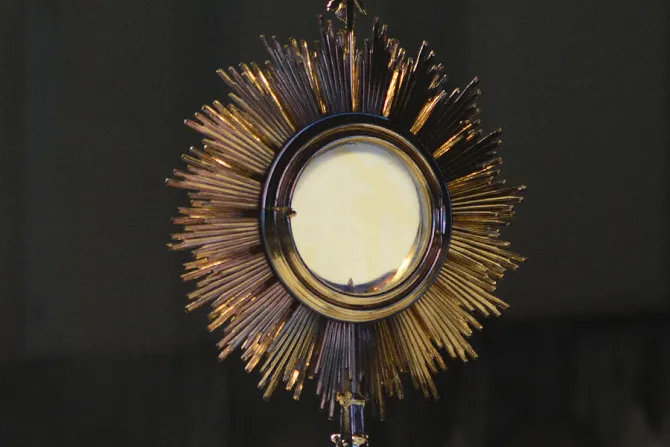Buenos Aires, Argentina, May 12, 2015 / 23:03 pm
Large numbers of the faithful are donating gold and silver belongings to forge a new monstrance after a theft in Tucuman, Argentina.
Located in northwest Argentina, Tucuman is Argentina's smallest province, but second only to Buenos Aires in population density.
In 2011, two costly monstrances were stolen from the Museum of Sacred Art. To replace them, a new monstrance will be made. It will be used at the 2016 National Eucharistic Congress.
A monstrance is the vessel that holds the Eucharist for adoration and benediction.
To create the new vessel, the local faithful are donating their prized possessions – even their wedding rings.
According to La Gaceta newspaper, one elderly woman donated three small gold rings, saying, "It's all I have."
Another woman donated her deceased husband's wedding ring. "I was married for 65 years, I want this ring to be close to Jesus," she said.
Offering a gold and silver crucifix from 1914, one donor commented that "it belonged to my family, now I want it to be with the Blessed Sacrament."
"Our great desire is that our people can give a new monstrance to Tucuman…," explained Marcelo Lobo Viaña, president of the Administrative Council of the Museum of Sacred Art, and Maria Arias de Fria Silva, who runs the Friends of the Museum Foundation.
The stolen monstrances were extremely valuable. The older one was of Jesuit origin, while the newer one was commissioned by the late Bishop Bernabé Piedrabuena in 1924. It contained several precious stones and, like its replacement, had also been made from donations of silver and gold from the people of Tucuman.
The stolen jeweled monstrance was forged by José Pallarols Torras, grandfather of Juan Carlos Pallarols, the goldsmith who has been given the job of fabricating the new vessel.
Pallarols has already done important work for Tucuman, including repairing the scepter of the statue of the Virgin of Mercy. The artisan, who is offering his work on the monstrance free of charge, noted that "all the donated material will be melted down so that we can all be one."
Introducing the fundraising campaign, which has as its theme "The Best for Christ," Tucuman's Archbishop Alberto Zecca recalled that his own pectoral cross and episcopal ring were made by the well-known goldsmith.
For the prelate, the donations of the people of Tucuman for this new monstrance are like the woman in the Gospel who only gave a few coins, while the rich people were depositing much more. Jesus, upon seeing this, commented that the widow had given more than all the others, because they gave from their surplus, but she, from her poverty, offered her whole livelihood.
Archbishop Zecca said that the spirit of the National Eucharistic Congress has begun to be lived out with that type of generosity. "The new monstrance," he said, "is an offering of the people of Tucuman…."


